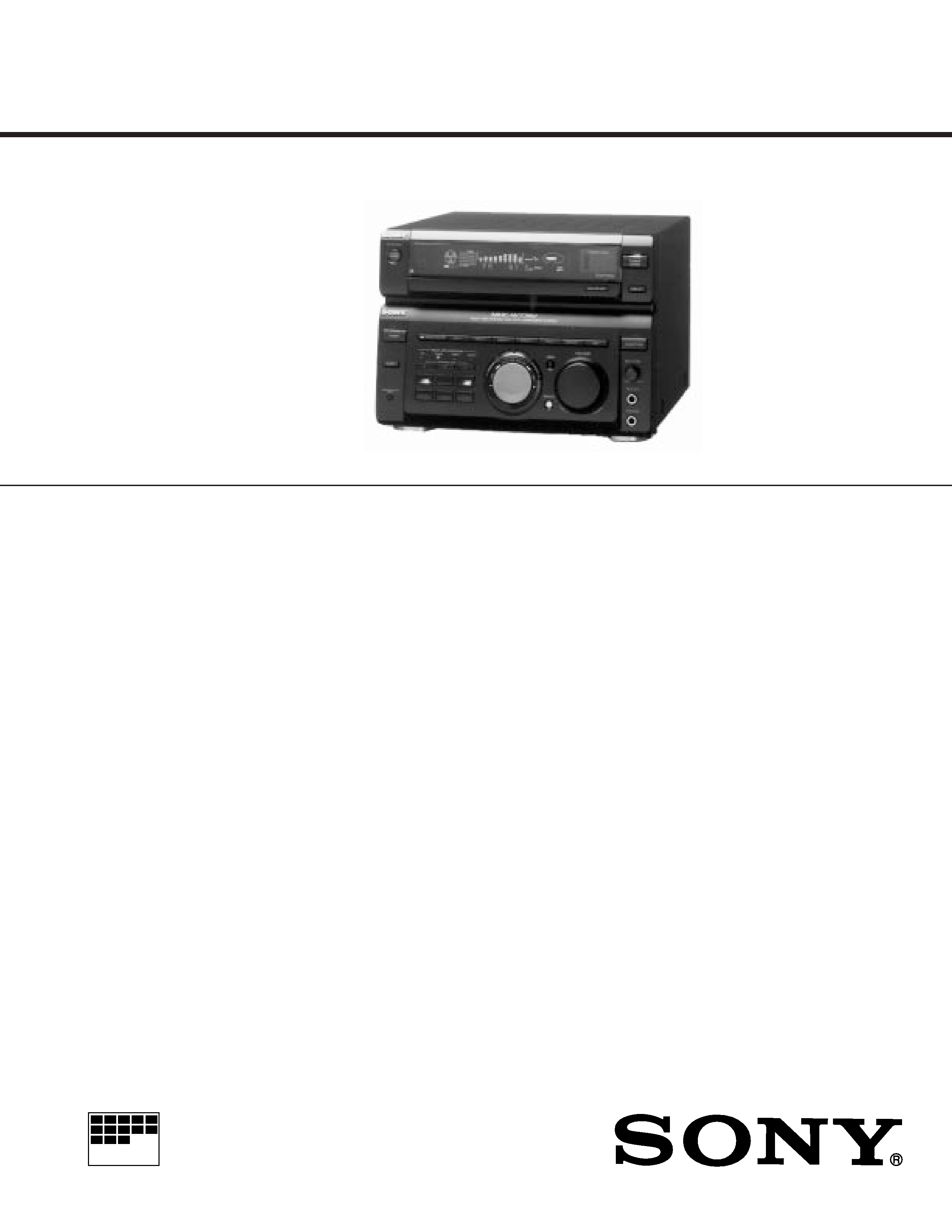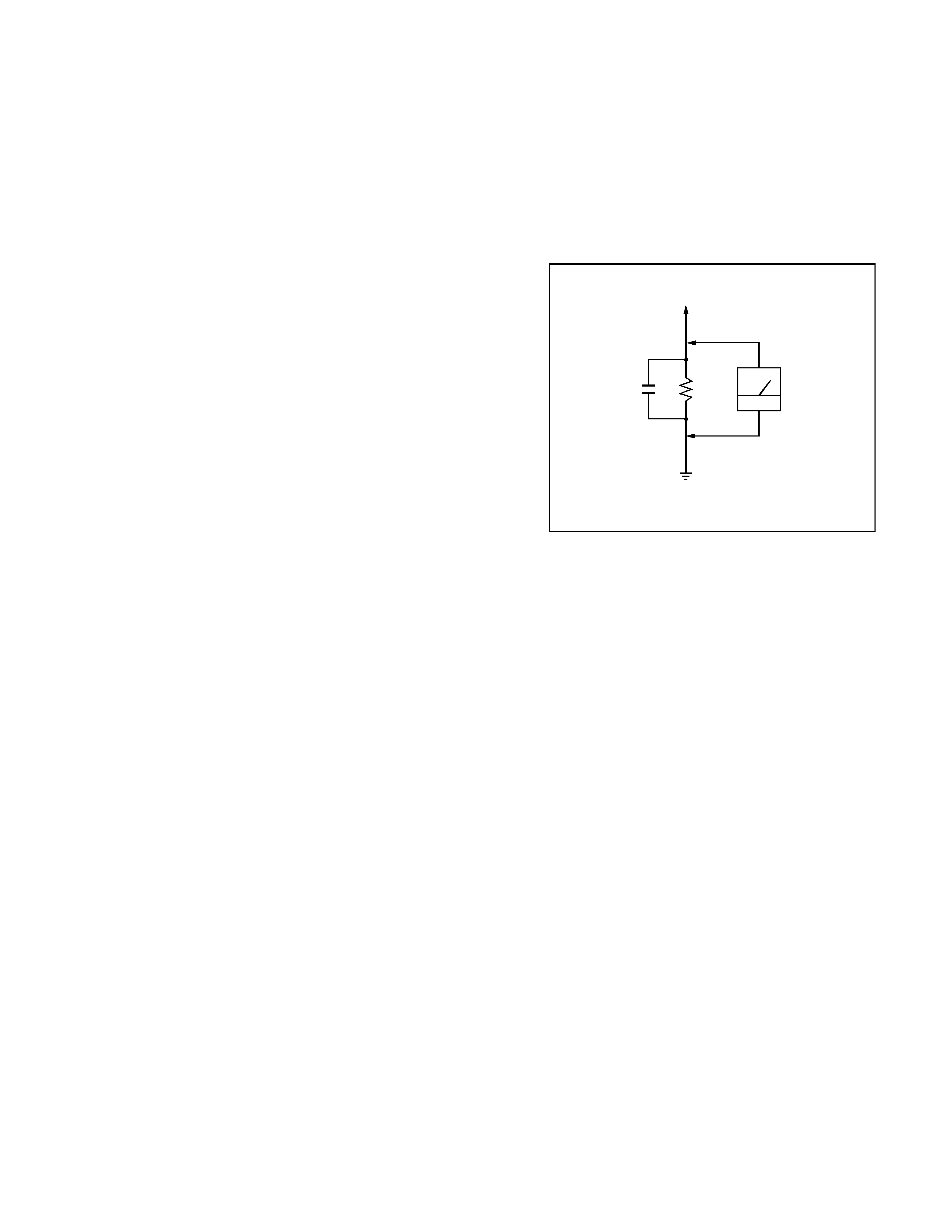
MICROFILM
US Model
Canadian Model
E Model
Australian Model
Tourist Model
STR-W77
FM STEREO/FM-AM RECEIVER
SPECIFICATIONS
(REAR)
15 W + 15 W
(8 ohms at 1 kHz, 5% THD)
EXCEPT US model :
(FRONT)
120 W + 120 W
(6 ohms at 1 kHz, 5% THD)
(CENTER)
30 W (8 ohms at 1 kHz, 5% THD)
(REAR)
15 W + 15 W
(8 ohms at 1 kHz, 5% THD)
Inputs
VIDEO/MD IN (phono jacks) :
voltage 250 mV/450 mV
impedance 47 kilohms
MIX MIC (phono jacks) :
sensitivity 1 mV/450 mV
impedance 10 kilohms
Outputs
VIDEO/MD OUT (phono jacks) :
voltage 250 mV
impedance 1 kilohms
PHONES (stereo phono jacks) :
accepts headphones of 8 ohms or more
FRONT SPEAKER :
accepts impedance of 6 to 16 ohms
CENTER SPEAKER :
accepts impedance of 8 to 16 ohms
REAR SPEAKER :
accepts impedance of 8 to 16 ohms
SUPER WOOFER :
voltage 250 mV impedance 1 kilohms
Continued on page 2
With 6 ohm loads, both channels driven, from 4020, 000 Hz; rated 100 watts
per channel minimum RMS power, with no more than 0.9 % total harmonic
distortion from 250 milliwatts to rated output. (US model)
Tuner section
FM stereo, FM/AM superheterodyne tuner
FM tuner section
Tuning range
EXCEPT Tourist model :
87.5108.0 MHz
Tourist model :
76.0108.0 MHz
Antenna
FM lead antenna
Antenna terminals
75 ohm, unbalanced
Intermediate frequency
10.7 MHz
AM tuner section
Tuning range
US, Canadian, E2, Argentine, Australian,
Thailand model :
AM : 5301,710kHz (10kHz)
5311,710kHz (9kHz)
E3, Saudi Arabia, Hong Kong, Singapore,
Malaysia, Tourist model :
MW : 5311,602kHz (9kHz)
SW : 5.9517.90MHz (9kHz)
Antenna
AM loop antenna, External antenna terminals
Intermediate frequency
450 kHz
Amplifier section
Continuous RMS power output
US model :
(FRONT)
100 W + 100 W
(6 ohms at 4020,000 Hz, 0.9% THD)
120 W + 120 W
(6 ohms at 1 kHz, 5% THD)
(CENTER)
30 W (8 ohms at 1 kHz, 5% THD)
STR-W77 is RECEIVER section in
MHC-W77AV.
SERVICE MANUAL

2
Specifications ................................................................................. 1
1. GENERAL .............................................................................. 4
2. TEST MODE .......................................................................... 5
3. ELECTRICAL ADJUSTMENTS ......................................... 6
4. EXPLANATION OF IC TERMINALS .................................. 8
5. DIAGRAMS
5-1. Printed Wiring Boards Main Section ......................... 12
5-2. Schematic Diagram Main Section ............................. 17
5-3. Schematic Diagram Panel Section ............................. 23
5-4. Printed Wiring Boards Panel Section ........................ 27
5-5. Schematic Diagram TCB Section
(US, CND, E2, AR, AUS, TH model) ............................ 29
5-6. Printed Wiring Boards TCB Section
(US, CND, E2, AR, AUS, TH model) ............................ 31
5-7. Printed Wiring Boards TCB Section
(E3, EA, MY, SP, HK, JE model) ................................... 32
5-8. Schematic Diagram TCB Section
(E3, EA, MY, SP, HK, JE model) ................................... 33
6. EXPLODED VIEWS
6-1. Chassis Section ............................................................... 35
6-2. Front Panel Section ......................................................... 37
7. ELECTRICAL PARTS LIST .............................................. 38
Section
Title
Page
TABLE OF CONTENTS
General
Power requirements
US, Canadian model : 120 V AC, 60 Hz
Australian model : 240 V AC, 50/60Hz
Thailand model : 220 V AC, 50/60Hz
Other models :
110-120 V/220-240 V AC adjustable, 50/60 Hz
Power consumption
EXCEPT Canadian model : 260 watts
Canadian model : 350 VA
Dimensions
Approx. 280 x 205 x 345 mm (11x
81/
16 x 13
9/
16 in.) (w/h/d)
Mass
Approx. 6.4 kg (14 lb 2 oz)
Design and specifications are subject to change without notice.
Notes on chip component replacement
· Never reuse a disconnected chip component.
· Notice that the minus side of a tantalum capacitor may be damaged
by heat.
SAFETY-RELATED COMPONENT WARNING!!
COMPONENTS IDENTIFIED BY MARK
! OR DOTTED LINE WITH
MARK
! ONTHE SCHEMATIC DIAGRAMS AND INTHE PARTS LIST
ARE CRITICAL TO SAFE OPERATION.
REPLACE THESE COMPONENTSWITH SONY PARTS WHOSE PART
NUMBERS APPEAR AS SHOWN IN THIS MANUAL OR IN
SUPPLEMENTS PUBLISHED BY SONY.
ATTENTION AU COMPOSANT AYANT RAPPORT
À LA SÉCURITÉ!
LES COMPOSANTS IDENTIFIÉS PAR UNE MARQUE
! SUR LES
DIAGRAMMES SCHÉMATIQUES ET LA LISTE DES PIÈCES SONT
CRITIQUES POUR LA SÉCURITÉ DE FONCTIONNEMENT. NE
REMPLACER CES COMPOSANTS QUE PAR DES PIÈCES SONY
DONT LES NUMÉROS SONT DONNÉS DANS CE MANUEL OU
DANS LES SUPPLÉMENTS PUBLIÉS PAR SONY.
MODEL INDENTIFICATION
BACK PANEL
Parts No.
Model
4-980-659-0
US
4-980-659-1
Canadian
4-980-659-2
E, Saudi Arabia, Argentine, Torist
4-980-659-3
Australian
4-980-659-4
Hong Kong
4-980-659-5
Malaysia, Singapore
4-980-659-7
Thailand

3
SAFETY CHECK-OUT
After correcting the original service problem, perform the following
safety check before releasing the set to the customer :
Check the antenna terminals, metal trim, "metallized" knobs, screws,
and all other exposed metal parts for AC leakage. Check leakage as
described below.
LEAKAGE TEST
The AC leakage from any exposed metal part to earth ground and
from all exposed metal parts to any exposed metal part having a re-
turn to chassis, must not exceed 0.5mA (500 microampers).
Leakage current can be measured by any one of three methods.
1.
A commercial leakage tester, such as the Simpson 229 or RCA
WT-540A. Follow the manufacturers' instructions to use these
instruments.
2.
A battery-operated AC milliammeter. The Data Precision 245
digital multimeter is suitable for this job.
3. Measuring the voltage drop across a resistor by means of a VOM
or battery-operated AC voltmeter. The "limit" indication is 0.75V,
so analog meters must have an accurate low-voltage scale. The
Simpson 250 and Sanwa SH-63Trd are examples of a passive VOM
that is suitable. Nearly all battery operated digital multimeters that
have a 2V AC range are suitable. (See Fig. A)
Earth Ground
Fig. A. Using an AC voltmeter to check AC leakage.
AC
Voltmeter
(0.75V)
0.15 F
µ
1.5k
To Exposed Metal
Parts on Set

4
SECTION 1
GENERAL
This section is extracted from
instruction manual.
INDEX TO PARTS AND CONTROLS

5
SECTION 2
TEST MODE
DISPLAY / KEY TEST MODE
Press the ENTER/NEXT and FUNCTION buttons simultaneously.
Then press the MENU 1 button with the following 4 seconds to set the Test Mode.
1. The message "W3 NA (destination) " appears on the screen and a 32 cycle square wave of the subcrystal oscillator is output from Pin 24
(AUB. OUT).
2. Press any key to rotate JOG and all FL indicators light up.
When you rotate JOG at this point, the display changes as follows.
N all FL indicators on Nn FL pattern 1 Nn FL pattern 2 n
The changes and all LED indicators light up.
3. Again press any key to set the key count check. The following display appears.
000
The numbers in order from left to right show ; the number of keys pressed, the JOG count (1 click per 4 counts), and the VOL count.
(1 cycle is a count of 96.)
4. Press the Power button to reset to the factory settings.
AMP TEST MODE
Press the ENTER/NEXT and FUNCTION buttons simultaneously.
Then press the MENU 2 button with the following 4 seconds to set the Test Mode.
1. The message "AMP TEST" appears on the screen. Press the MENU button to call up the Equalizer Curve for the Amp Test.
However when the function is set to the tuner, use the MENU button to call up each tuner preset from 1 through 5.
2. Press the Power button to reset to the factory settings.
MICROCOMPUTER COLD START
Press the ENTER/NEXT and FUNCTION buttons simultaneously.
Then press the MENU 3 button with the following 4 seconds to reset the microcomputer to the factory settings.
SUBCRYSTAL TEST MODE
Press the ENTER/NEXT and FUNCTION buttons simultaneously.
Then press the MENU 4 button with the following 4 seconds.
The message "XTAL TEST " appears on the screen and a 32 cycle square wave of the subcrystal oscillator is output from Pin 24 (AUB.OUT).
In addition, a square wave of the same frequency as the subcrystal oscillator, is output from 4PIN (POWER. ON/OFF).
Press the Power button to reset to the factory settings.
